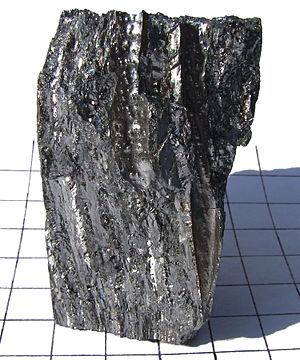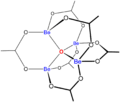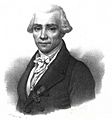Beryllium facts for kids
Beryllium is a special kind of metal called an alkaline earth metal. You can find it in group 2 of the periodic table. It looks a bit grayish. Beryllium has an atomic number of 4, and its symbol is Be. It's important to know that beryllium can be harmful if not handled correctly, so experts use special safety rules when working with it.
Each beryllium atom has 4 electrons, 4 protons, and usually 5 neutrons.
Beryllium has a very high melting point for a light metal, melting at 1287 °C (1560 K). It's often mixed with other metals to make them stronger. For example, a mix of beryllium and copper is used to make tools that won't create sparks, which is super important in places where sparks could be dangerous.
When it's at normal room temperature and pressure, beryllium doesn't easily rust or combine with oxygen.
Beryllium is also famous for the chemical compounds it forms. When beryllium combines with aluminium, silicon, and oxygen, it creates a mineral called beryl. You might know two beautiful types of beryl: Emerald and aquamarine. These are often used as gemstones in jewelry.
Because beryllium is very stiff but also light, it's used to make parts for high-quality speakers. These parts, called diaphragms, help the speakers produce clear sound.
Contents
What Beryllium is Used For
Beryllium is a very useful metal. It's used in many advanced machines like jet airplanes, guided missiles, spacecraft, and satellites. A great example is the James Webb Space Telescope, which uses beryllium parts because they are light and strong.
Beryllium can also reflect tiny particles called neutrons. Because of this, thin sheets of beryllium are sometimes used in special parts of nuclear weapons and in fuel rods for CANDU reactors. It's also found in many dental alloys used by dentists.
Where is Beryllium Found?
Beryllium is quite rare in the universe. It usually forms when larger atoms break apart. In stars, beryllium doesn't last long because it gets used up to build even bigger elements.
Want to Learn More?
| Periodic table | |||||||||||||||||||||||||||||||||||||||||
|---|---|---|---|---|---|---|---|---|---|---|---|---|---|---|---|---|---|---|---|---|---|---|---|---|---|---|---|---|---|---|---|---|---|---|---|---|---|---|---|---|---|
| H | He | ||||||||||||||||||||||||||||||||||||||||
| Li | Be | B | C | N | O | F | Ne | ||||||||||||||||||||||||||||||||||
| Na | Mg | Al | Si | P | S | Cl | Ar | ||||||||||||||||||||||||||||||||||
| K | Ca | Sc | Ti | V | Cr | Mn | Fe | Co | Ni | Cu | Zn | Ga | Ge | As | Se | Br | Kr | ||||||||||||||||||||||||
| Rb | Sr | Y | Zr | Nb | Mo | Tc | Ru | Rh | Pd | Ag | Cd | In | Sn | Sb | Te | I | Xe | ||||||||||||||||||||||||
| Cs | Ba | La | Ce | Pr | Nd | Pm | Sm | Eu | Gd | Tb | Dy | Ho | Er | Tm | Yb | Lu | Hf | Ta | W | Re | Os | Ir | Pt | Au | Hg | Tl | Pb | Bi | Po | At | Rn | ||||||||||
| Fr | Ra | Ac | Th | Pa | U | Np | Pu | Am | Cm | Bk | Cf | Es | Fm | Md | No | Lr | Rf | Db | Sg | Bh | Hs | Mt | Ds | Rg | Cn | Uut | Fl | Uup | Lv | Uus | Uuo | ||||||||||
|
|||||||||||||||||||||||||||||||||||||||||
Images for kids
-
Louis-Nicolas Vauquelin was the scientist who discovered beryllium.
-
Friedrich Wöhler was one of the scientists who managed to get pure beryllium.
-
A square piece of beryllium foil used as a window for an X-ray microscope. Beryllium lets X-rays pass through easily because it has a low atomic number.
-
A hollow beryllium sphere used in a gyrocompass for the Boeing B-52 Stratofortress aircraft.
See also
 In Spanish: Berilio para niños
In Spanish: Berilio para niños













